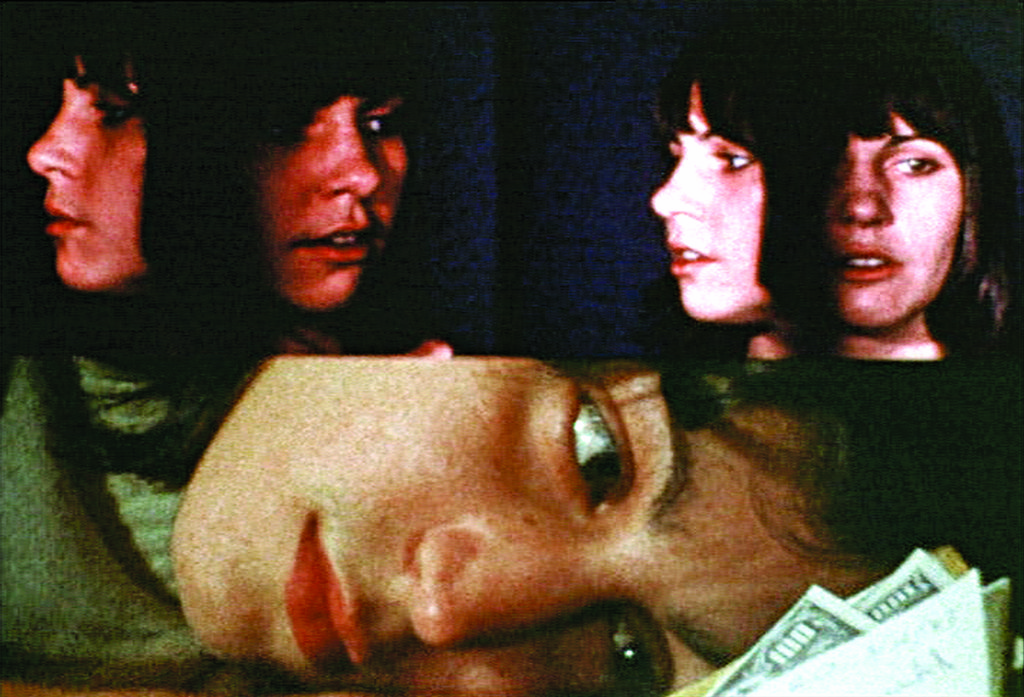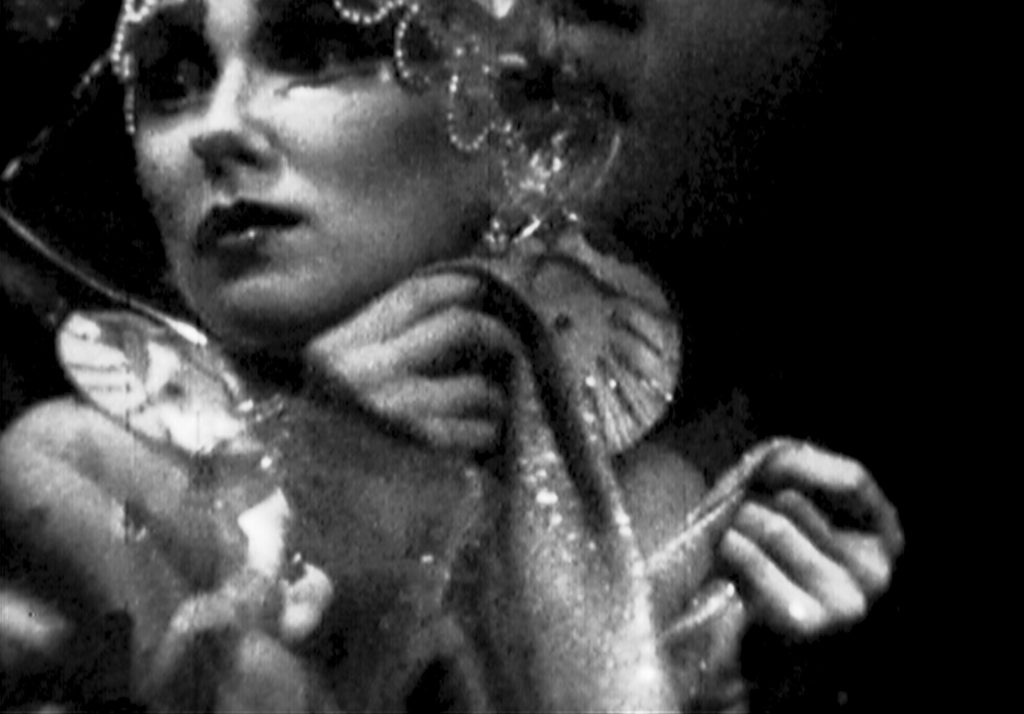Monday January 31 – Thursday February 3, 11:30pm PT
Films by Leandro Katz
Live Q&A with audience follows at 8:30pm ET
— Online only —

[…] My work exists inside a very transitory position between the senses and the intellect, between nature and culture, attempting to make sense within the ruins of both. — Leandro Katz, 1982
Microscope is very pleased to present an online screening of films by Argentinian-American artist Leandro Katz. The program includes a selection of four 16mm shorts made by Katz in the 1970s and 80s in New York, where he lived and worked between 1965 and 2006.
Now based between Buenos Aires and Los Angeles, Katz is an artist working in film, photography and installation known for large-scale projects addressing Latin American subjects — such as Catherwood’s expeditions to Central America, the execution of Che Guevara, banana plantations in the Honduras, and the rubber industry in the Amazon — usually encompassing a variety of mediums and involving a combination of “historical research, anthropology, and visual arts.” His body of work includes over 20 films and videos completed between 1976 and today. Katz was also the curator of the exhibition “Film As Installation” presented in 1980 (and a second in 1983) at The Clocktower, which included Anita Thacher’s debut of “Loose Corner” as a work-in-progress.
In “Los Angeles Station” a single tracking shot of a community in the banana plantation of Quiriguá, Guatemala is subject to the formal expedient of alternating an equal number of moving and frozen frames. This entirely arbitrary rule applied to filmmaking reveals aspects of the moving image as well as the film’s content previously unaccounted for, in which “the mechanical tension between the handheld camera’s panning and the systematic stops creates disarmingly simple, evocative effects,” Tony Pipolo noted in a 1980 review in the Millennium Film Journal.
“Reel Six: Charles Ludlam’s Grand Tarot” consists of very rare black & white film footage shot by Katz in 1970 of Charles Ludlam’s play “The Grand Tarot” starring himself, Mario Montez, and Lola Pashalinski, among others. Sexually explicit and costume-heavy scenes from various moments of the performance are shown simultaneously in multiple screens and later superimposed, offering an exquisite peek into the history of the Theatre of the Ridiculous movement and genre.
A film that at first glance may appear to be an outburst of the No Wave Cinema, “The Visit” as completed in 1986 is a filmic reworking on 16mm of a 75-minute long 35mm slide show (it contained as many as 1200 slides) with continuous soundtrack first appeared in 1980. The work still includes sequences of frozen frames hinting at its own genealogy, and giving us a clue of its original narrative and dramatic qualities as opposed to those of the standard film. “The Visit” is a movie about everything and nothing — the entire action of which rests upon a secret the viewer is not told — best described by the artist himself: “A man buries a mysterious package in a field.” The chase and struggles that this single act incites can only resolve, in a circular way, in the same field where the movie started off, in a glooming ending dominated by the protagonist’s psychology.
Based on Jorge Luis Borges’ 1948 short story “Emma Zunz,” in which the female protagonist avenges her father’s death, “SPLITS” alludes to the character’s psychological fragmentation and visually translates the dissociated self through split screens positioned within split screens, both vertically and horizontally composing the main frame. Emma seems to carry out justice — we see her hand writing “not for revenge, but for justice” — not only for herself but by extension for Argentinian working class, as well. “The time when history liquidates the masters” — as uttered by one of the two entrancing voices overlapping and fading in and out throughout the film — has come, as suggested by her recurring visions of workers striking, in the form of black & white newsreel. Through its treatment of the multi-screen, “SPLITS” exposes classic cinema’s limitation to convey internal life, revealing the possibilities opened up by more experimental forms of filmmaking.
Leandro Katz will be attending the online Q&A with the audience, which takes place via live chat and will begin promptly at 8:30pm ET.
A link to watch the program will appear on this page on Monday January 31st at 6:30pm ET.
General Admission: $9 (Valid through Thursday February 3, 11:30pm PT)
Member Admission: $7 (Valid through Thursday February 3, 11:30pm PT)
_
Leandro Katz (1938) is an Argentinian/American artist, writer, and filmmaker, known for his films and his photographic installations, his works include long-term projects that deal with Latin American subjects, and incorporate historical research, anthropology, and visual arts. These include “The Catherwood Project,” a photographic reconstruction of the two 1850’s expeditions of Stephens and Catherwood to the Maya areas of Central America and Mexico, “Project For The Day You’ll Love Me,” which investigates the events around the capture and execution of Che Guevara in Bolivia in 1967, “Paradox,” which deals with Central American archaeology and the banana plantations in the Maya region, and “Vortex,” which addresses the social and literary history of the rubber industry in the Amazon region of the Putumayo River.
Solo exhibitions include “Encuentros de Pamplona 72: fin de fiesta del arte experimental,” Museo Reina Sofía, Spain (2009), “Natural History,” Henrique Faria Fine Art, New York (2010); “Imán-New York,” PROA, Argentina (2010); “10,000 Lives,” Gwangju Biennale, South Korea (2010); “A (Los Alfabetos),” 11×7 Gallery, Buenos Aires (2011); “Raptures, Diagonals and Ruptures” – Espacio Fundación Telefónica, Buenos Aires (curated by Bérénice Reynaud); “Intersections (after Lautréamont),” CIFO, Miami (2015); “Borges: Ficciones de un tiempo Infinito, La Muerte y la Brújula,” Centro Cultural Kirchner, Argentina (2016), “El rastro de la gaviota,” Tabacalera, Spain (2017), (curated by Berta Sichel), and “Proyecto para el día que me quieras y la danza de fantasmas,” Cuauhtémoc Medina, Amanda de la Garza y Cecilia Rabossi, curators – Museo Universitario de Arte Contemporáneo, Mexico, and Proa21, Buenos Aires, 2018.
Katz is the recipient of a Guggenheim Fellowship, and of grants from the National Endowment for the Arts, the Arts Council of New York, The Jerome Foundation, and the Rockefeller Foundation. His “Lunar Alphabet” was part of the first Art Basel Cities initiative in Buenos Aires in September of 2018, curated by Cecilia Alemani, and has been permanently installed at the entrance of Biblioteca Nacional Mariano Moreno. He is the recipient of “Premio a la Trayectoria Artística” given by the National Minister of Culture in 2021, and his installation work has been included in the Museo Nacional de Bellas Artes collection.
Leandro Katz was a member of the faculty at the School of Visual Arts, New York, the Semiotics Program at Brown University, Rhode Island, and a professor of Film Production and Theory at the School of Art and Communication, William Paterson University, New Jersey. Since 2005, he shuttles between Buenos Aires and Los Angeles.

Program:
Los Angeles Station
16mm, color, silent, 1970 (released 1976), 5 minutes 30 seconds
Portrait of a small community living by the railroad tracks in the banana plantation region of Quiriguá, Guatemala. Originally a single take, this film is composed of alternating equal number of moving frames and frozen frames as the camera tracks alongside the train station.
”Los Angeles Station is Leandro Katz’s simplest, most direct and probably least ambitious film and yet in many ways it is his loveliest. The results of the systematically structured material is unexpectedly stirring. Because of the impersonal method of construction, the freeze frames are not the result of sudden sentimental tugs. The count sometimes falls very conveniently on an image of natural poses, strikingly set against the backdrop; but just as often, the freeze frame is of a bare wall or an alleyway. The mechanical tension between the handheld camera’s panning and the systematic stops creates disarmingly simple, evocative effects. The freeze may halt a pan or simply congeal an already held moment. In the first case, an image often ends up de-centered, highlighting the broadside of the shack-like dwellings with their inhabitants crowded at the edge. Or, alternatively, a smiling boy, full of animate life and sensuousness, suddenly becomes an anthropological document, frozen evidence of a time, a place, and a culture.” — Tony Pipolo, Millennium Film Journal, © December 1980
Reel Six: Charles Ludlam’s “Grand Tarot”
16mm, color, sound, 1987, 8 minutes
Rare montage footage of the Ridiculous Theatrical Company with Charles Ludlam, Black Eyed Susan, John Brockmeyer, Mario Montez, Lola Pashalinsky, Ekathrina Sobechanskaya, Bill Vehr and Lohr Wilson performing Ludlam’s first version of ‘The Grand Tarot’ in 1970.
SPLITS
16mm, color, sound, 1978, 27 minutes
With Lynn Anander, Kathy Gales and John Levin
Based on “Emma Zunz” by Jorge Luis Borges, SPLITS is the story of a young factory worker who in an act of revenge decides to kill her deceiving boss who was also her father’s former partner, believing that his deceit lead her father to prison, humiliation and death.
The Visit
16mm, black and white, sound, l986, 30 minutes
With Mark Boone Junior and José Rafael Arango
Cinematography: Viktor Vondracek
A man buries a mysterious package in a field.
“The Visit, originally a black and white slide show with a continuous soundtrack, to be projected on a cinema screen, tells of two men pursuing each other, as criminal adversaries as well as sexually, but it proceeds without explaining what the factual basis or the moral valence of their several encounters might be.” — From “Mutations of Film Narrative” by Christine Noll Brinckman and Grahame Weinbren, Idiolects # 12, 1982

_
Microscope’s Event Series 2021 is sponsored by Re:Voir, a home video label for classic and contemporary experimental film in Paris, France.

